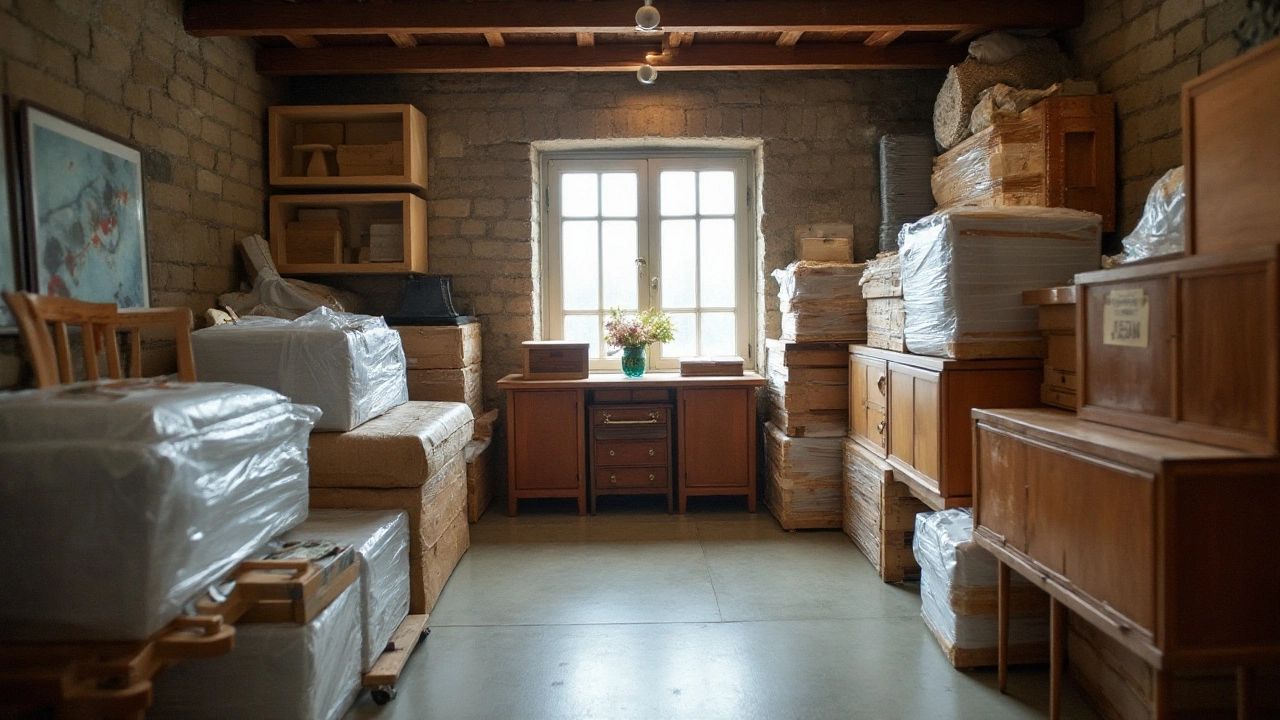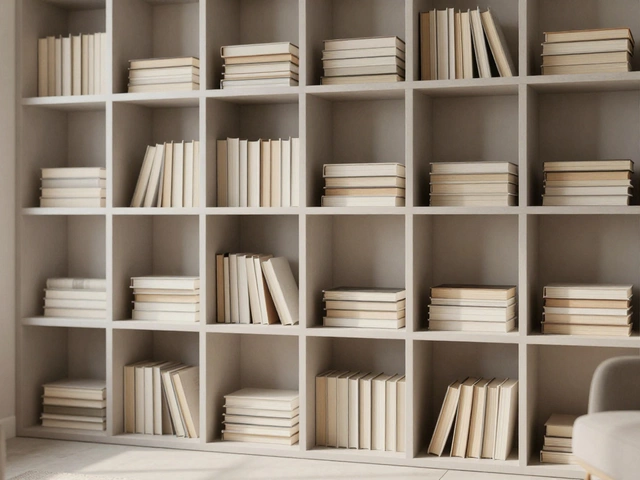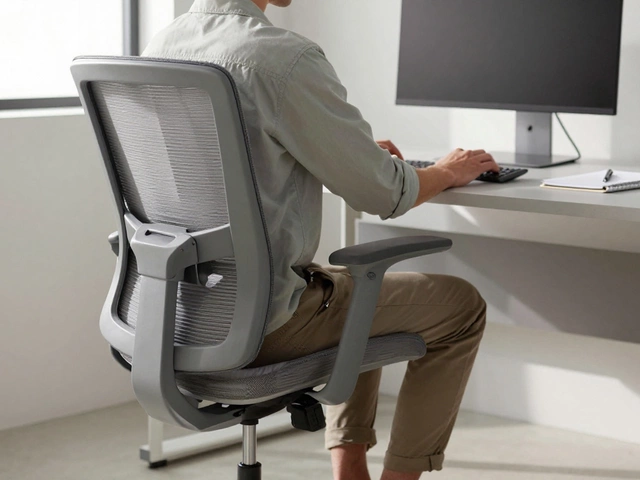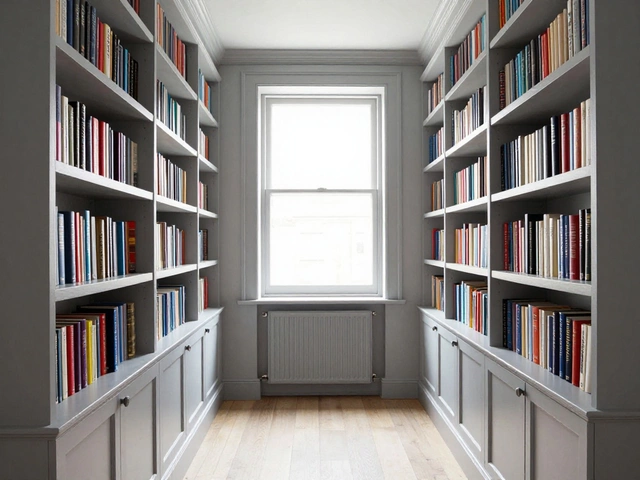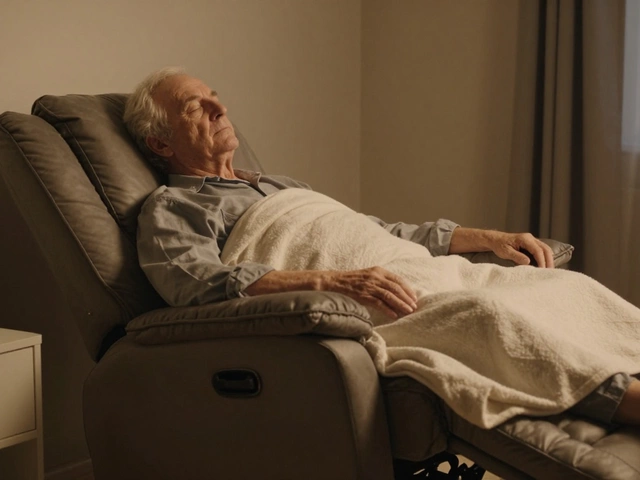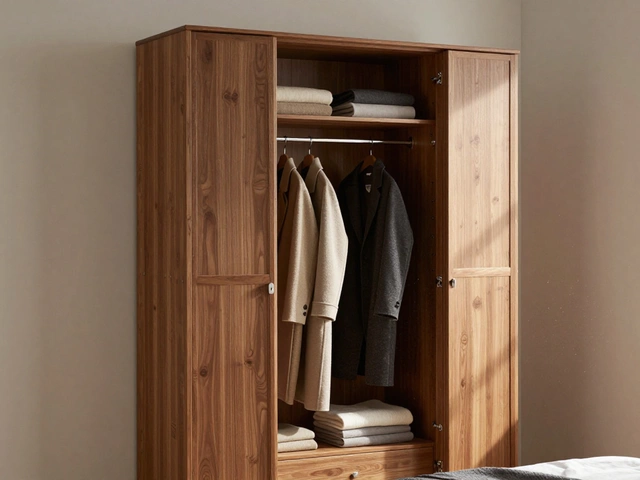Many of us have found ourselves in situations where our furniture must face the unknown challenges of storage. Whether it’s for the short term during a move or long term due to space constraints, ensuring your furniture doesn’t come out worse for wear requires a bit of know-how.
From humidity control to pest prevention, understanding what can compromise the integrity of your furnishings is pivotal. Let's dive into the world of storage solutions and unravel methods to keep your favorite couch, cherished dining table, or that comfy armchair in pristine condition until they’re ready to return to everyday use.
- Common Causes of Furniture Damage in Storage
- Choosing the Right Storage Facility
- Preparing Furniture for Storage
- Protective Materials and Techniques
- Regular Maintenance and Check-Ups
Common Causes of Furniture Damage in Storage
When you tuck your precious items away in some storage, they encounter certain enemies that creep around, waiting to pounce on neglect. First up, humidity is a notorious foe. It lurks in the shadows, silently wreaking havoc. Wooden furniture absorbs moisture, causing it to warp, swell, or crack over time. Moisture is also a breeding ground for mold and mildew; these not only cover surfaces with unsightly patches but can often leave behind a distinct, unpleasant odor. On the other hand, fabrics may degrade or stain, making your plush couch lose its charm. Addressing humidity doesn’t stop at just awareness - it demands action. Consider investing in a dehumidifier or utilizing silica gel packs to draw the moisture away from your stored items.
Another often overlooked aspect is temperature fluctuation. Extreme temperature changes can cause materials to expand and contract, which over months and years can lead to warped frames and splintered surfaces. Imagine leaving a beautiful antique wardrobe in such conditions, only to find out later that it no longer holds its structural beauty because it couldn’t handle the thermal stress. Temperature control is a critical factor, especially for items of sentimental value.
Pests form another brigade of assailants. Mice, bugs, and mites don’t see your furniture as your beloved possessions; they see them as a feast or a cozy home. Mice gnawing through upholstered furniture or nests being built in infrequently checked spaces can turn a lovable item into a disgusted disposal. Regular pest inspections can keep these unwanted visitors at bay, alongside methods such as using mothballs or cedar blocks, which deter many types of critters.
According to a report by Storage World, "Furniture stored in climate-controlled units is 50% less likely to experience issues related to pests and environmental factors than those in non-regulated environments."
Inadequate packing is another leading cause of damage. Wrapping your furniture items properly is not just about keeping dust away; it’s about providing a protective shield against scratches and dents. Bubble wrap, furniture pads, and moving blankets are great allies when it comes to safeguarding your treasures. Also, raising items off the ground can prevent potential flood damage, a risk factor that can be easily mitigated but is often ignored until disaster strikes.
Lastly, stacking might seem like a great space-saving strategy, but it can quickly become your furniture's worst nightmare. Heavy items on top of delicate ones can cause irreversible damage. Plan your storage layout thoughtfully, ensuring heavier items reside below, and nothing rests precariously to avoid future heartbreak. Always take a moment to appreciate your storage space dynamics - it’s a small investment for a longer lifespan of your stored gems.
Choosing the Right Storage Facility
In the quest to safeguard your precious furniture, selecting the proper storage facility is paramount. It's not just about finding a space to stash your belongings; it's about ensuring those treasured pieces come back to you in the same immaculate condition. First, consider climate-controlled units, which are essential if you’re storing materials sensitive to temperature fluctuations like wood, leather, or fabric. Such units regulate both temperature and humidity, minimizing risks of warping, cracking, or mould growth. Interestingly, studies have noted that maintaining a steady temperature of around 21°C (70°F) and relative humidity of 50% can significantly reduce damage risks.
Location is another important consideration. When selecting a facility, weigh its proximity to your home against the likelihood of visiting frequently. A facility that is closer may offer convenience, but it's the quality of the space that genuinely counts. Remember to scrutinize security features, such as 24-hour surveillance cameras, gated access, and individual alarms for each unit. After all, keeping your items safe from theft is as crucial as protecting them from environmental hazards. A report by the Self-Storage Association found that facilities with robust security protocols had 49% fewer incidents of theft compared to those with basic security.
Heading into practical concerns, size cannot be underestimated. Measure your furniture meticulously and choose a space that provides a little extra room for air circulation, which can also prevent unwanted damage. Don't just squeeze everything into a tight corner; give your items the space they need to ‘breathe’. A helpful tip is to plan your layout before you ever set foot in a facility. Sketch a blueprint of how you intend to arrange your furniture, ensuring there's enough space to manoeuvre.
According to John Hoffman, a storage expert at the Canadian Storage Society, "The right storage unit goes far beyond just size and price. It’s about finding the perfect environment where your furniture is in the best possible hands—not just for today, but for the long haul."
Finally, the reputation of the facility can’t be overstated. Customer reviews and ratings can provide invaluable insights into past users' experiences, offering you an unbiased glimpse into the facility's operations. If a certain name comes up frequently with glowing or cautionary tales, it’s worth paying attention to. Opt for facilities with a history of reliability and customer satisfaction, ensuring your storage tips are borne out by those who've come before. Critically, a good facility should offer insurance plans that cover unforeseen events, enabling peace of mind as you entrust them with your possessions.
So, embark on this journey of choosing the right facility with the diligence it deserves. This isn’t just about stowing away objects; it’s about preserving cherished connections and memories. Whether your chair is a family heirloom or a thrift store find, your goal is to ensure it remains just as beloved once retrieved, thanks to careful and informed storage choices.
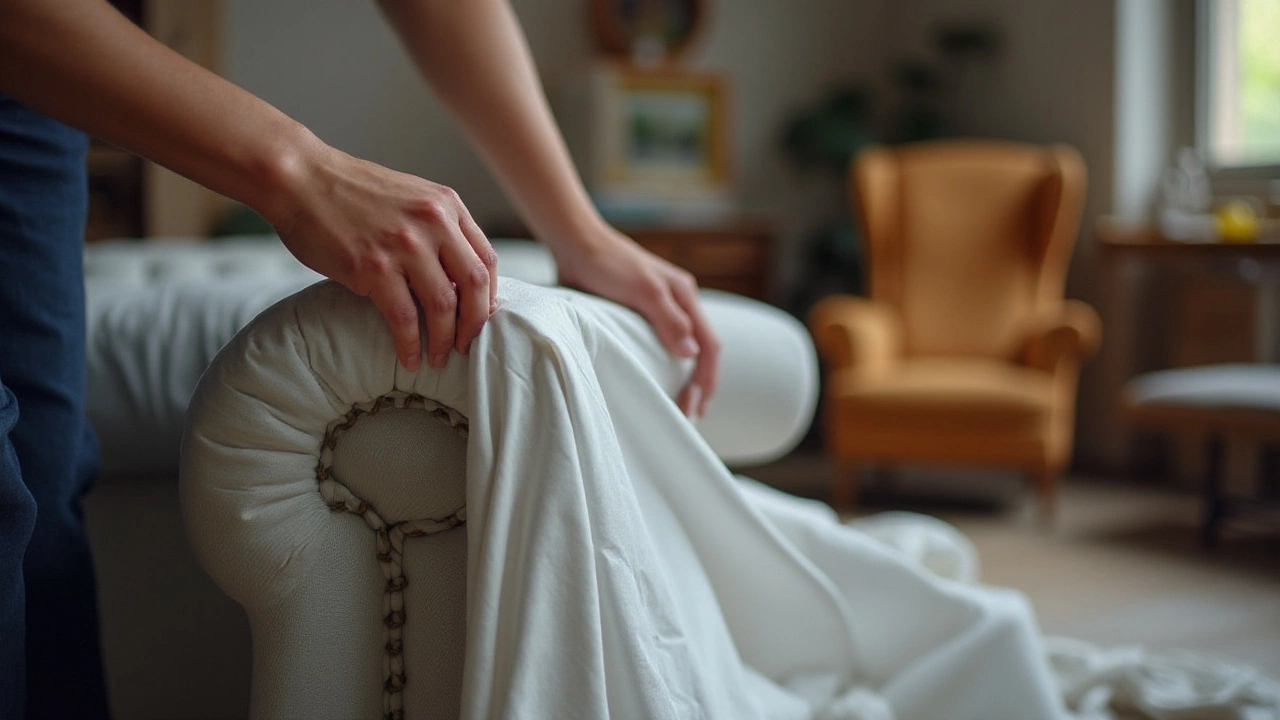
Preparing Furniture for Storage
When it comes to furniture storage, preparation is half the battle. It begins with a thorough cleaning session, as any dirt or remnants left on the furniture can culminate into stubborn stains or worse, malodors, over time. For wooden or plastic items, use a gentle soap and water solution followed by a polish. It reinforces the wood’s natural oils, keeping it healthy and minimizing the chances of cracking during the storage period. For fabrics or upholstery, a vacuum with a brush attachment works wonders to remove any lingering dust particles.
Once a piece is clean, consider the climate control aspects of your storage facility. Extreme temperatures and high humidity are furniture’s arch-nemeses, often leading to warping, splitting, or mold accumulation. The ideal environment mimics habitation conditions, with consistent moderate temperatures and controlled humidity. If a climate-controlled unit isn’t feasible, invest in dehumidifiers or moisture absorbers. This can save your furniture from potential damage, such as unsightly mold or unsettling odors.
Next comes disassembly. Larger items like bed frames, dining tables, and shelving units typically enjoy the efficiency and space-saving that dismantling brings. Not only does it decrease the chance of breakage, but also makes transporting them more manageable. Keep track of small parts such as screws or bolts by sealing them in labeled Ziploc bags; these can then be taped to the corresponding furniture piece.
Then, wrap each piece thoughtfully. Opt for furniture covers, blankets, or bubble wrap to shield them from accidental scratches or dings. Avoid plastic covers directly on fabric sofas or chairs, as this can trap moisture and lead to mildew. According to Emily Henderson, an acclaimed interior designer,
“A little investment in protective materials goes a long way in preserving your furniture’s longevity. Never underestimate the security that padded furniture blankets offer.”
Finally, consider labeling each piece with fragile labels where needed and arrange a logical order in storage. Store lighter or smaller pieces on top to prevent crushing. Make sure there is a bit of breathing room around each item for air circulation. Comprehensive organization not only makes retrieval easier but prevents unnecessary pressure on your treasured furnishings.
Protective Materials and Techniques
When it comes to storing valuable furniture, what you decide to wrap and cover your items with can make all the difference between them emerging scratch-free or a little worse for wear. A little preparation now can save you a lot of future heartache. One of the most effective methods often begins with finding the right protective materials. Anything from bubble wrap to moving blankets plays a crucial role in creating a barrier against dings, scratches, and dust. But how do you know what to use?
One widely recommended approach is to cover surfaces with blankets and drape them carefully, securing these blankets with stretch films. It provides not only a cushion but also a form of packaging that allows furniture to breathe, crucial for preventing mold and humidity buildup, which can be disastrous over time. In fact, a study by a renowned home goods association suggested that items wrapped in breathable materials were 30% less likely to show signs of mold and moisture-related damage after 12 months in storage.
Another secret tool in the arsenal of protective storage is a humble sheet of plastic. Despite being a simple solution, it acts as a great layer beneath items in storage to ward off moisture and prevent cold from seeping through concrete or tiled floors. Combine it with pallets or blocks to elevate furniture off the ground, which helps keep everything in tip-top shape in fluctuating temperatures. These practical tips can be your best allies in protecting your pieces.
Don't underestimate the value of desiccants either. Silica gel packs are often overlooked, but they work wonders to control ambient moisture levels in an enclosed space. Choose a size proportionate to your storage area for maximum effectiveness. With the right number of gel packs scattered throughout, even in a humid climate, you can maintain a dry environment and save yourself the hassle of mold management later. To quote an industry expert, "Prevention is the key. Simple precautions today can forestall furniture catastrophes tomorrow."
Then there are high-quality covers, which offer a straightforward solution for various furniture types. Ventilated furniture covers, designed to be breathable yet protective, are excellent for larger items like sofas and dining sets. They ensure your cherished belongings remain free from dust while allowing air circulation. It’s worth considering investing in covers specifically marketed as 'breathable' or 'ventilated,' particularly if you plan to keep the pieces stored away for extended periods.
When packing delicate items, bubble wrap is the hero you need. It's ideal for protecting tabletops, glass doors, and any piece with intricate embellishments that could be easily chipped. Just remember to use the bubble side facing the items for an extra cushion effect. This small detail can significantly impact how well your furniture storage initiatives protect against potential damage.
With these materials and techniques at the ready, you can ensure your valued pieces come through storage unscathed. Remember to stack lighter items on top and avoid overcrowding your heaps. Carefully labeling each piece or section will make future unpacking significantly easier, saving you precious time and effort. Bringing together such methods increases the odds your treasured furniture will stay just as beautiful as you left them.
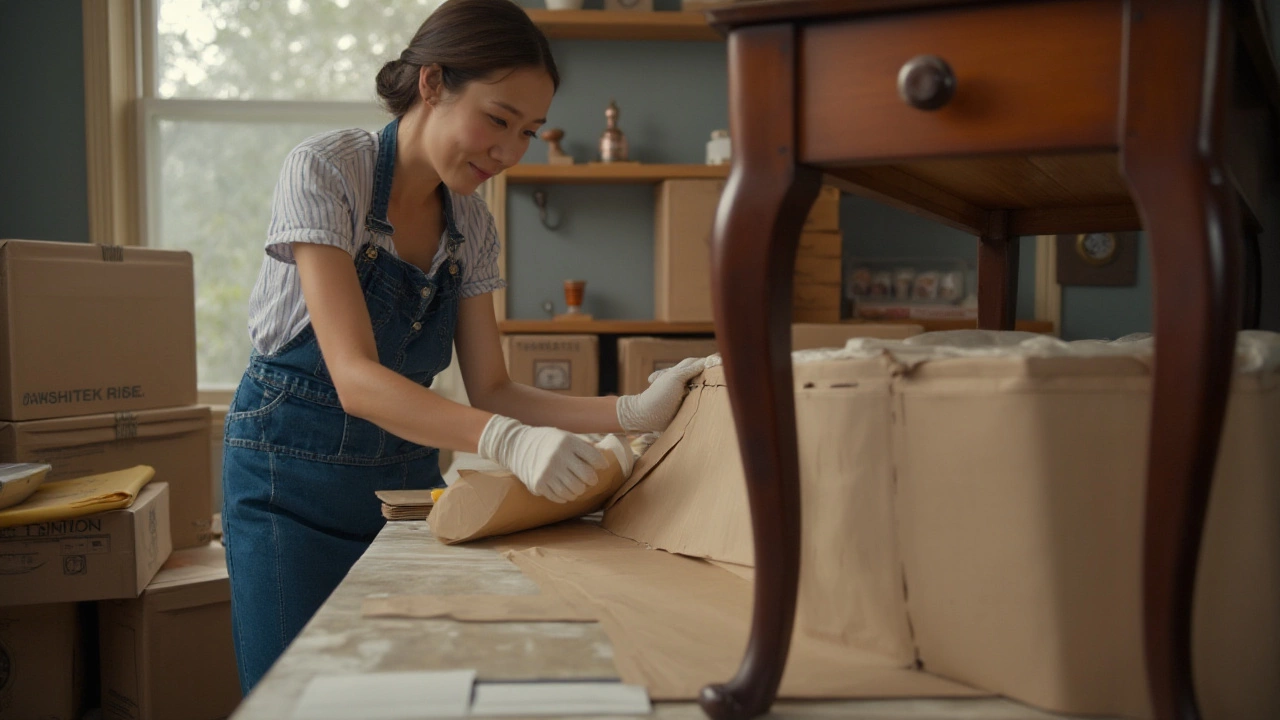
Regular Maintenance and Check-Ups
Once your cherished pieces are tucked away in furniture storage, it’s easy to fall into a set-it-and-forget-it mindset. However, the key to preserving their condition lies in regular maintenance and check-ups. Venturing into the storage space at least every couple of months can provide peace of mind and ensure no unexpected issues have cropped up. During these visits, especially after major weather changes, it’s crucial to examine your furniture for signs of moisture or temperature-related deterioration. Checking for any musty odors is a quick way to detect whether humidity is creeping in, something that can lead to mold or warping, especially of wooden items. This simple act can be the difference between a beautiful solid oak dining table and a warped, unrecognizable piece.
Check for Humidity and Temperature Conditions
Humidity and temperature are two silent agents that often wreak havoc on stored goods. Many storage facilities offer climate-controlled units, an upfront investment that easily pays off by preventing damage caused by extreme fluctuations. If you opted for a standard unit, consider investing in a hygrometer and thermometer. This ensures you can effectively monitor the environment your furniture faces; it’s best to keep humidity levels below 50% and maintain moderate temperatures. A digital hygrometer placed discreetly among the stored goods can offer constant feedback, making adjustments timely and preemptive.
"Climate control and regular checks help maintain the longevity of furniture in storage," notes Edward Barnes, a specialist in antique restorations.
Inspect for Pests and Infestations
You might not notice them initially, but pests, especially rodents and insects, can become disastrous offenders if left unchecked. Regular inspections allow you to detect droppings or chewed materials before they’ve escalated into full-blown infestations. Furniture, especially upholstered items, can quickly become nesting grounds for these little creatures. Using natural pest repellents, such as essential oils or cedar blocks, can provide an organic layer of protection. Moreover, a well-placed trap or two can effectively gauge whether you are under threat, allowing you to act swiftly and protect your investment.
Reapply Protective Coatings
Once every year, it may be beneficial to reapply protective coatings on your stored pieces. For wooden furniture, this means a fresh layer of wax or oil to maintain its sheen and buffer against moisture. Metal items can be treated with rust inhibitors to stave off oxidation. This small effort contributes significantly to the preserved look and structural integrity of your goods. You don't want your beautiful mahogany table to lose its luster or metallic furniture to show signs of corrosion.
Ensure Stability and Organisation
Another undervalued aspect is ensuring that furniture remains stable and well-organized. Shifting items to avoid prolonged pressure on any single structure helps prevent distortion. For larger items like wardrobes or bedframes, confirming their solidity can avert potential collapse, which might damage other stored articles or harm anyone moving through the unit. It also requires marking out a path within the unit itself. This simple precaution can prevent accidents, saving you both time and resources.
Remembering to carry basic cleaning supplies during your checks is also wise. A quick wipe of surfaces keeps dust and allergens in check, which also helps maintain the aesthetic value of your treasures. Good habits breed success, and in this case, they'll ensure your furniture emerges from storage as pristine as it entered.

